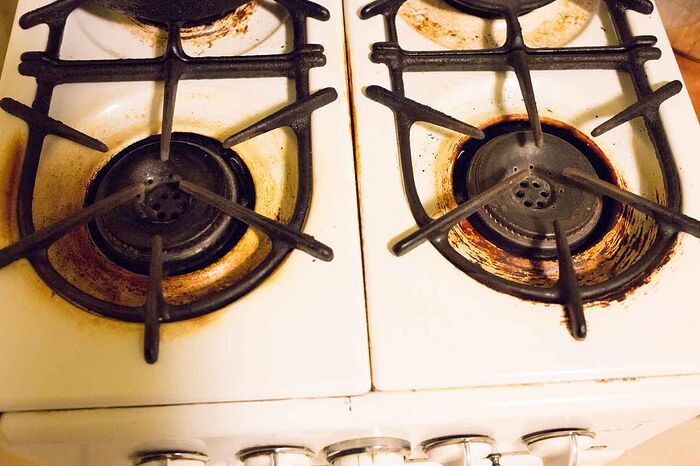I am thinking about potentially replacing one of the 2 stainless steel stock pots at home. That one is a no-name stainless steel pot that came with the wife. The reason for potentially replacing it? Terrible heat conduction. Here’s how I found out.
I had never given the slow heating much thought because I always cook like 7" of water in that pot for a big pot of oatmeal. So the slow heating was previously attributed to just the large volume of water that needed to be heated. Recently, in order to speed up the oatmeal cooking, I heat water in both SS stockpots simultaneously, so that I could combine them when they both started boiling.
The other stockpot was a stainless Cuisinart.
So I just eyeballed about the same amount of water for each pot and started heating. The Cuisinart was done a few minutes after. Wanting to speed up even further, I poured perhaps one third of the water from the no-name pot into the Cuisinart and let them continue heating.
The Cuisinart started boiling after a minute or two, while the no-name was still heating. Repeating the same routine, I poured more water from the no-name brand to the Cuisinart. Cuisinart started boiling soon after. The whole routine repeated maybe 1 or 2 times until the Cuisinart ended up with probably 90% of the water, boiling, when the no name pot finally boiled with maybe 0.5" of water in there.
Well, that was a waste of gas I thought, by the no-name pot, not just this time, but many times over the years. I asked the wife and the no-name pot was a cheapo pot.
The question is, if they are both stainless steel, what could cause them to deviate so wildly in conductivity? Nickel content? My Cuisinart has a bunch of crap at the bottom so I can’t read the engraving unless I scrub the pot clean. But I am fairly sure its a 18/10. The no-name pot probably has no nickel. Any other factors? The no-name pot is fairly light. Though the Cuisinart is not much heavier. With that said, the Cuisinart is shorter, but wider by maybe an inch or 1.5" in diameter. Maybe that makes a difference too in ‘capturing’ more heat from the gas with the larger bottom surface area?
I am trying to understand the factors that causes its terrible heat conductivity so I can get a replacement that performs better.
Now the background is out of the way, what is the stock pot product line out there in your opinion that achieves the best tradeoff of great heat conductivity and price? I don’t need looks for the pot since all I do is boil water/ soup in there. Ugly/ food service is fine. I will figure out the needed size later. Thanks!





